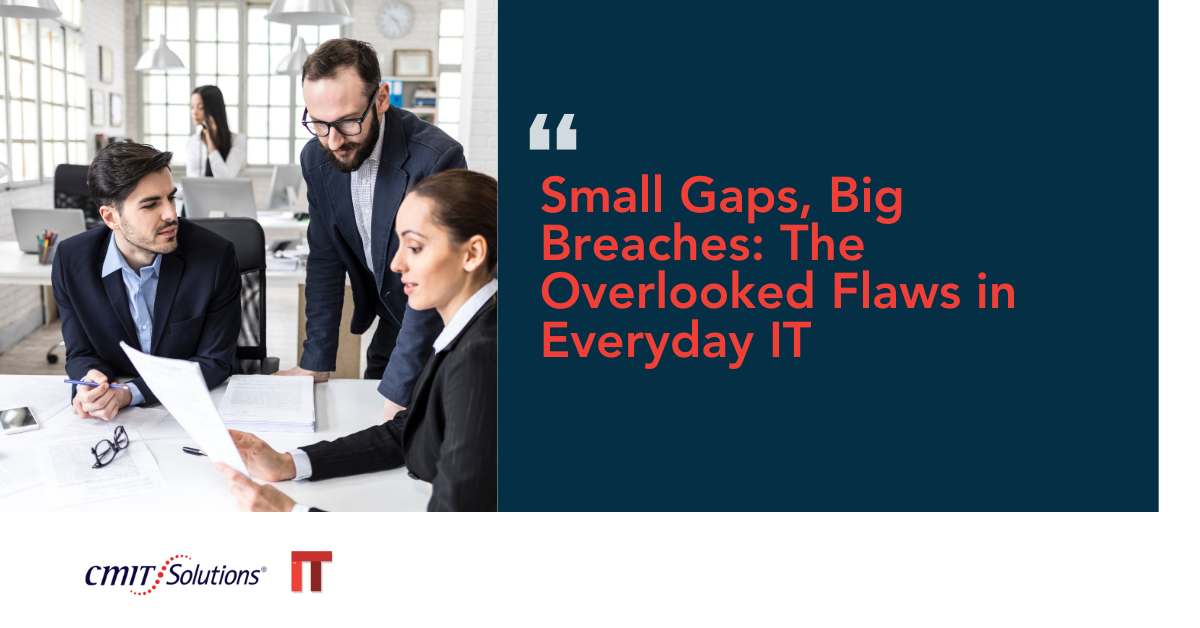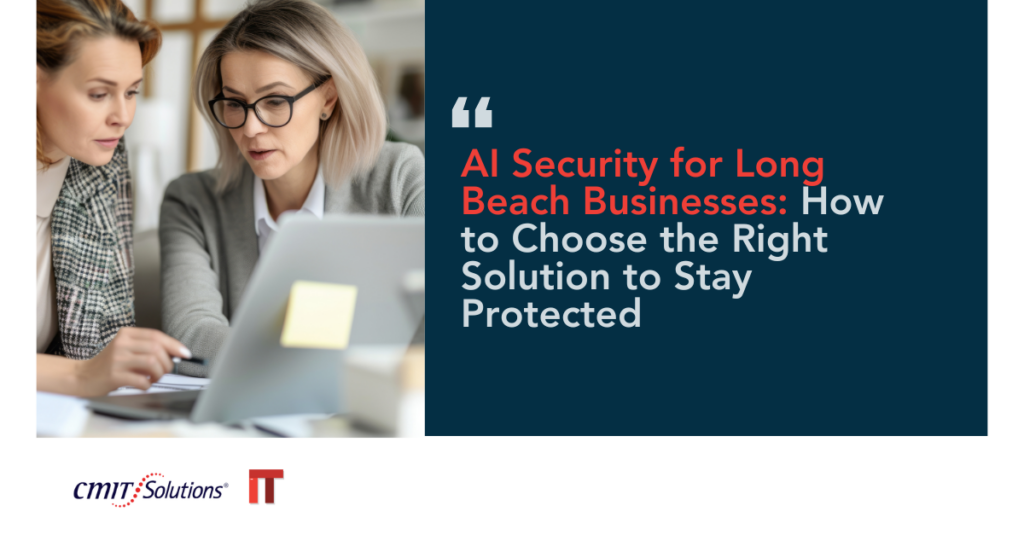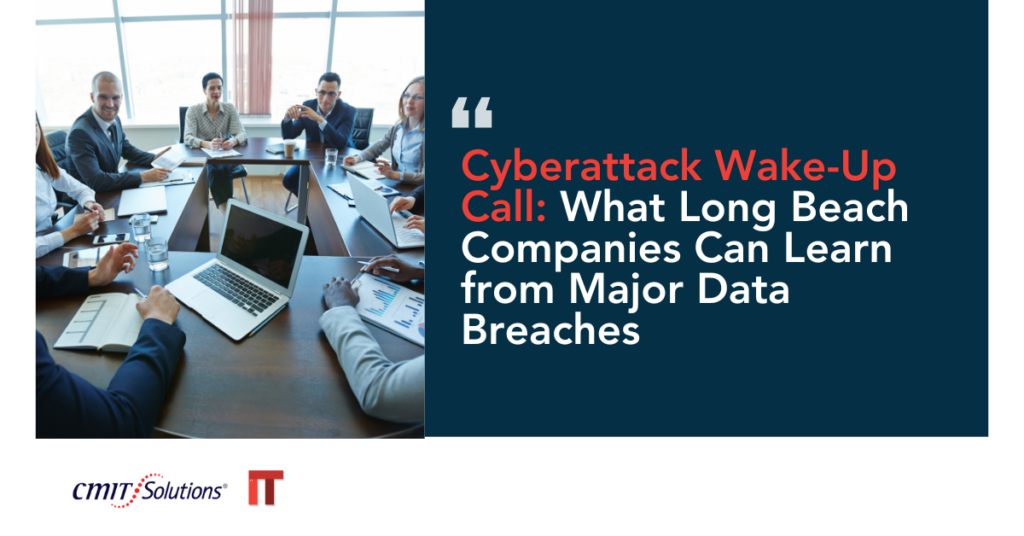In the digital-first business world of Long Beach, most companies assume that big security problems come from big mistakes. Yet time and time again, it’s the seemingly minor gaps—the overlooked misconfigurations, the outdated software, the unmanaged endpoints—that become the source of the most damaging breaches. Small businesses are especially vulnerable, often lacking the resources and expertise to proactively monitor every facet of their IT ecosystem.
Understanding Small IT Gaps
Small IT gaps refer to the often-overlooked flaws in everyday technology operations that seem insignificant until they are exploited. These can include anything from an outdated antivirus definition to a forgotten cloud storage setting or an unmanaged employee device. For businesses in Long Beach, these minor missteps can have major consequences. As shown in recent cases of cybersecurity oversights, even the smallest vulnerabilities can be the entry point for devastating breaches.
With increasing digitization and remote operations, a single weak link can grant cybercriminals access to your entire IT environment. Businesses that rely heavily on cloud-based applications but ignore proper network management often open up additional exposure. Similarly, teams that delay implementing managed IT services to monitor and patch systems in real time run a higher risk of falling behind modern threats.
The issue isn’t that companies don’t care about cybersecurity—it’s that they often don’t know where the true vulnerabilities lie. These hidden pitfalls create a false sense of security, and attackers are well aware of this. Understanding and identifying these small gaps is the first step toward creating a secure, resilient IT framework that can withstand evolving threats.
Patch Delays and Password Risks
Security patch delays might seem like a minor oversight, but they create a massive opportunity for attackers. If vulnerabilities are publicly disclosed and not patched, it’s only a matter of time before automated tools are used to scan and exploit them. Now, pair that with common employee behaviors like reusing simple passwords or sharing credentials, and you’ve set the stage for a breach. Relying solely on traditional firewalls makes it worse, especially when remote workers, cloud apps, and mobile devices aren’t protected under that perimeter. Embracing zero trust security and transitioning to passwordless access helps eliminate this trifecta of vulnerabilities.
Evolving Threats Require AI
Cybercriminals now use machine learning and automation to attack at scale. These tools scan thousands of systems per second, identify misconfigurations, outdated firmware, or exposed ports, and exploit them within minutes. Manual monitoring by an in-house team simply can’t keep up. This is where AI-driven security platforms come in. They detect anomalies in real time and stop threats before they spread. Automation also reduces human error, which remains one of the biggest contributors to breaches. In short, businesses that fail to leverage automated security tools are not just behind—they’re inviting trouble.
Cloud Misconfigurations
Cloud platforms offer agility, scalability, and cost savings, but they also come with risks that are often underestimated. Misconfigured storage buckets can publicly expose sensitive data, while a lack of cloud governance leads to duplicated services, underutilized resources, and ballooning costs. Without centralized oversight, companies lose visibility into where their data resides and who has access. The solution lies in implementing secure and scalable cloud infrastructure and eliminating waste through cloud cost optimization. Cloud is not just a tool; it’s a system that needs oversight, policies, and expert guidance to prevent it from becoming a liability.
Weak Backup Strategies
One of the costliest assumptions in IT is that disaster won’t strike you. But cyberattacks, hardware failures, or human error can all result in data loss—and without a recovery plan in place, your business operations could grind to a halt. Many Long Beach companies still depend on outdated backup methods like local storage or manual file copies. That’s not just inefficient; it’s dangerous. True resilience comes from having an automated, encrypted, offsite solution that includes real-time monitoring, failover systems, and rapid restoration. The power of cloud-based backups and ransomware preparedness lies in turning a crisis into a minor speed bump.
Endpoint Security Challenges
Today’s workforce is more mobile than ever, and that mobility has expanded the attack surface dramatically. Laptops, phones, tablets, and remote desktops outside the office firewall are often poorly secured. Employees connect from home networks, use personal devices, and access cloud tools from everywhere. Each of these endpoints is a potential doorway into your network. Businesses that don’t implement strict remote endpoint management, enforce strong authentication policies, and deploy threat detection tools are setting themselves up for breach. Investing in remote endpoint protection is not optional; it’s foundational.
The Compliance Risk
Healthcare, finance, and legal industries are subject to stringent compliance requirements like HIPAA, PCI-DSS, and more. But compliance isn’t just about checking boxes; it’s about safeguarding trust, protecting sensitive information, and ensuring long-term operational integrity. A single violation can lead to legal action, lost customers, and irreversible brand damage. Many SMBs assume that compliance is expensive and complex, but failure is costlier. Partnering with experts who understand compliance strategy and how to avoid fines through automated monitoring and security-first processes ensures your organization stays audit-ready and protected.
The Cost of Break-Fix IT
The old break-fix IT model might save money in the short term, but it’s costly over time. Unplanned downtime, emergency fixes, and lost productivity add up quickly. Not to mention the stress and disruption of critical failures. Modern businesses require proactive maintenance: updates before systems fail, threat detection before breaches occur, and planning before scale creates chaos. Managed IT services deliver this through 24/7 monitoring, cloud management, automation, and strategic guidance—helping businesses avoid hidden costs and grow sustainably.
Using Next-Gen Tools
Cybersecurity isn’t a luxury or a secondary priority—it’s at the core of business survival in today’s connected world. AI is enabling smarter threat prediction, faster response, and real-time anomaly detection. Combined with Managed Detection and Response (MDR), Endpoint Detection and Response (EDR), and Security Information and Event Management (SIEM) platforms, businesses can now proactively identify and shut down threats before they cause damage. The insights from AI innovation and advanced cybersecurity platforms must be embraced by businesses that aim to thrive, not just survive.
IT in Healthcare
Healthcare organizations cannot afford to gamble with technology. Patient data is sensitive, regulated, and highly targeted by cybercriminals. Add to that the operational pressures of 24/7 access, electronic health records, and connected medical devices, and the stakes become clear. A one-size-fits-all IT approach just doesn’t cut it. Clinics and practices need customized, scalable IT solutions that combine data protection, compliance, and operational uptime. A trusted MSP partner can deliver exactly that.
Solving the Talent Gap
IT staffing shortages are real and growing. For SMBs, competing with large enterprises for top tech talent is often unrealistic. Salaries, benefits, and retention costs can break a budget. That’s why more businesses are turning to managed service providers to fill the void. MSPs offer a team of specialized experts across infrastructure, security, compliance, and support—for a fraction of the cost of hiring internally. By bridging the IT talent gap with outsourced expertise, SMBs in Long Beach can remain competitive and secure.
Aligning IT Strategy
Throwing tools at a problem is not a strategy. Technology investments without alignment to business goals are a waste of time and money. Instead, businesses need a long-term roadmap: an integrated strategy that defines the role of IT in achieving growth, improving security, and scaling operations. With a clear custom IT roadmap, businesses can measure ROI, optimize resources, and eliminate guesswork.
Final Thoughts: Protecting Your Business Starts with Awareness and Ends with Action
Cybersecurity and IT resilience don’t hinge solely on advanced software or new technology—they begin with visibility, understanding, and a willingness to adapt. Too many Long Beach businesses remain reactive, addressing issues only after they’ve occurred. But the threats we face today are faster, more sophisticated, and far more damaging than those of the past. It’s no longer just about protecting data; it’s about safeguarding business continuity, client trust, and long-term growth.
At the end of the day, it’s not about perfection—it’s about preparation. If you’re uncertain about where the risks lie in your current setup or you want to explore proactive ways to strengthen your IT environment, expert help is just a click away. Let’s connect and take the first step together toward closing the gaps and fortifying your business future.






